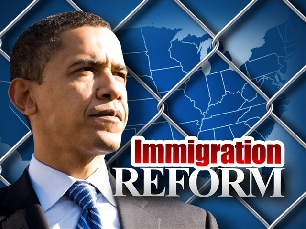
On November 5, 2008, Barack Obama, an African-American, made history when he was elected the 44th president of the United States. The world’s oldest democracy had finally broken the race ceiling and a ‘man of color’ was set to occupy the White House.
This year, on November 6, that part of history did not matter. President Obama was re-elected by a convincing majority and will now join the ranks of two-term U.S. presidents. And when he completes his second term in 2016, Obama would still be under 56.
The challenges for Obama are stark and complex — both in the domestic context and on the external front. On the home front, the economic stasis and related unemployment figures (7.9 percent) will need urgent attention, more so against the backdrop of campaign promises about getting America back on track. The ‘fiscal cliff’ looms large and a divided U.S. Congress will not make for easy or amicable consensus on tax cuts and public spending.
The foreign and security policy challenges are no less daunting and time critical. For a president who assumed office in January 2009 even as the United States was waging two wars — Iraq and Afghanistan — the radar screen is cluttered, particularly in relation to Asia. Iran looms large and Af-Pak has the 2014 deadline drawing closer.
The China factor is the overarching presence in the continent and it is no coincidence that Beijing is set to elect its own president, Xi Jinping this week. With a new hand on the tiller, Beijing’s orientation towards the U.S. against the backdrop of the Obama Asian pivot will be the critical determinant in defining the geo-strategic texture of the Asian region.
While seeking to restore economic vitality in the domestic context, Obama will have to concurrently establish U.S. credibility as a security guarantor with its anxious allies in Asia. Both East Asia and South East Asia are in a dilemma about how best to balance their own relations with an assertive China and a reticent United States. West Asia remains wary with an Arab Spring that has turned into a sullen autumn.
South Asia is the more intractable nettle for the U.S. given the tenacity of the terror complex that inhabits the Af-Pak swathe and the obduracy of a nuclear armed Rawalpindi which remains inflexible about nurturing the forces of right-wing Islamic religious extremism.
It merits recall that in March 2009, in his maiden address on this issue, Obama asserted: “We have a clear and focused goal – to disrupt, dismantle and defeat al Qaeda in Pakistan and Afghanistan, and to prevent their return to either country in the future … to the terrorists who oppose us, my message is the same: we will defeat you.”
The Abbottabad operation of May 2011 that eliminated Osama bin Laden was one of the major successes in Obama’s first term and played no small role in burnishing the profile of the U.S. president as a competent commander-in-chief. But as Libya demonstrated, the footprint of anti-U.S. sentiment that takes recourse to terror and pre-meditated violence has gone global and the goal of March 2009 may still remain elusive — even after 2014.
Paradoxically, while China and Japan had good reason to weigh the pros and cons of an Obama or Romney victory, for India either outcome would have seen a continuity in the bilateral relationship. The U.S.-India relationship has moved from prickly estrangement to tentative engagement since 2008 and bipartisan support in the U.S. Congress apropos imparting greater content is widespread.
While differences over issues like Iran will persist, for India there is comfort in working with an Obama administration that has already invested four years into the fine print of the partnership. Given the fact that India will be preparing for its own general election in early 2014, the next 12 months are the only window left for the UPA government led by Manmohan Singh to pursue the big-ticket issues with the United States.
New Delhi can derive satisfaction from the reality that it has the comfort of continuity in the White House and has been spared the vagaries of a new U.S. administration getting its own team into place — a process that can be time-consuming and contested. If Manmohan Singh can find the political will to engage with President Obama and pursue the many stalled bilateral initiatives with the United States, hopefully the next year will be more meaningful for a partnership that seems to have been adrift for some time.
If the campaign trail was a hard slog, the tough part for Obama begins now.




Be the first to comment